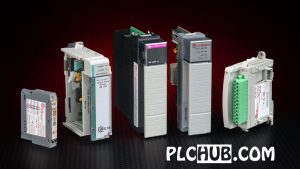
Comparing the features of different Allen Bradley PLC models to find the best fit for your project involves a systematic approach. Here are some steps you can follow:
1. **Define Your Project Requirements**: Before you start comparing PLC models, clearly define what you need in terms of I/O points, memory capacity, processing speed, communication protocols, and any specific features relevant to your project.
2. **Gather Specifications**: Collect detailed specifications for each Allen Bradley PLC model you are considering. This information can be found in the data sheets and technical documentation available on the Rockwell Automation website or from a sales representative.
3. **Create a Comparison Matrix**: Use a spreadsheet or a table to list the PLC models side by side. Include all the features that are important to your project, such as:
– I/O capacity
– Memory size
– Processing power
– Supported communication protocols (e.g., Ethernet/IP, ControlNet, DeviceNet)
– Network connectivity options
– Expansion capabilities
– Environmental ratings
– Size and form factor
– Power requirements
– Cost
4. **Prioritize Your Needs**: Not all features may be equally important for your project. Prioritize them based on your project’s specific needs and constraints.
5. **Consider Scalability and Future-Proofing**: Think about the potential growth of your project. Choose a PLC model that can be easily scaled or upgraded in the future.
6. **Evaluate Software Compatibility**: Ensure that the PLC models you are comparing are compatible with the software tools you plan to use for programming and monitoring.
7. **Assess Support and Resources**: Consider the availability of technical support, the community of users, and the amount of learning resources for each model. A model with strong support and resources can be easier to work with.
8. **Read Reviews and Case Studies**: Look for reviews from other users and case studies that demonstrate how the PLC models have been used in projects similar to yours.
9. **Request Demos or Trials**: If possible, request a demo or trial of the PLC models to get a hands-on feel for their performance and ease of use.
10. **Consult with Experts**: Reach out to industry experts, sales representatives, or technical consultants who can provide insights and recommendations based on your specific project needs.
11. **Cost-Benefit Analysis**: Perform a cost-benefit analysis to compare not only the initial cost of the PLC but also the total cost of ownership, including maintenance, potential downtime, and upgrade costs.
By carefully comparing the features and considering the overall suitability for your project, you can identify the Allen Bradley PLC model that best meets your requirements. Remember that the “best” PLC is not necessarily the one with the most features or the highest price tag, but the one that fits your project’s specific needs and constraints.

